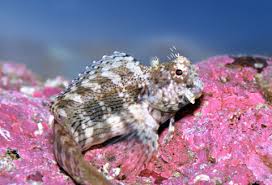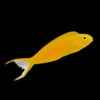Symbolic Dragons in the Cultures of China’s Ethnic Minorities
China is home to 56 officially recognized ethnic groups, each with its own unique traditions, myths, and beliefs. While the Han Chinese regard the dragon (lóng, 龙) as a symbol of power, prosperity, and divine authority, many of China’s ethnic minorities have their own interpretations of the dragon, shaped by their distinct histories and spiritual beliefs. In these communities, dragons are not only celestial creatures but also guardians of nature, ancestors, and intermediaries between the human world and the spirits.
This article explores various types of symbolic dragons found in the cultures of China’s ethnic minorities, including the Zhuang, Miao (Hmong), Yi, Naxi, Bai, Dong, and Tibetan peoples.
1. Zhuang Dragons: The Ancestral Serpent-Dragon
The Zhuang people (壮族), China’s largest ethnic minority, primarily inhabit Guangxi Zhuang Autonomous Region. Their myths often depict dragons as ancestral spirits and nature deities.
The Serpent-Dragon of Creation
One of the Zhuang’s most famous legends tells of a giant dragon-serpent that created the first humans. This dragon, known as Buluotuo (布洛陀), is considered the primordial ancestor of the Zhuang people. According to legend, Buluotuo descended from the heavens and shaped the mountains and rivers. When the world was barren, he carved the first rice paddies with his claws, teaching humans how to cultivate rice, a staple of Zhuang agriculture.
The Rain-Calling Dragon
Zhuang villages hold annual ceremonies to honor the rain-calling dragon, believed to reside in rivers and mountain springs. Shamans, called moba, lead rituals where villagers offer sacrifices and chant prayers, invoking the dragon’s blessing for good harvests.
2. Miao Dragons: The Fierce Protectors and Serpent Kings
The Miao (苗族), also known as the Hmong, are famous for their dragon myths, which emphasize battle, protection, and transformation.
The Water Dragon King
A well-known Miao legend tells of the Water Dragon King, a mighty dragon who protected the Miao people from invaders. In the story, the dragon would rise from the depths of a sacred lake whenever the Miao faced danger, using storms and floods to drive away enemies.
The Serpent-Dragon and the Miao Migration
Miao oral history describes a serpent-dragon deity that guided their ancestors on their great migration from the Central Plains to the mountainous regions of southern China. Some believe this dragon still lives in hidden caves, watching over Miao descendants.
Miao silver jewelry and embroidery often feature dragon and serpent motifs, representing ancestral protection and strength in adversity.
3. Yi Dragons: The Celestial Black Dragon of Fire
The Yi people (彝族), one of the largest ethnic groups in southwestern China, associate dragons with fire, cosmic balance, and divine judgment.
The Black Dragon of Fire and Thunder
According to Yi mythology, the Black Dragon (Hei Long, 黑龙) was a celestial beast that controlled fire and thunder. It was both a destroyer and a purifier, punishing the wicked while bringing warmth and light to the righteous.
Yi shamans, known as bimo, perform fire-worship ceremonies where dragon-shaped torches are set ablaze to symbolize the Black Dragon’s power over destruction and renewal.
The Yi Dragon Totem
The Black Dragon’s image appears in Yi festivals, particularly during the Torch Festival (火把节), where villagers light massive bonfires to ward off evil spirits and honor their dragon guardian.
4. Naxi Dragons: The Cosmic Guardian of the Dongba Religion
The Naxi people (纳西族) of Yunnan Province practice Dongba religion, a shamanistic tradition filled with dragon symbolism.
The Cosmic Dragon and the Balance of Nature
The Naxi believe in a universal dragon spirit that governs the balance between yin and yang, represented by water and fire. This cosmic dragon maintains harmony between mountains, rivers, and the sky.
In traditional Dongba script, one of the world’s oldest pictographic writing systems, dragons appear as symbols of spiritual wisdom and cosmic order.
The River Dragon Ceremony
Every year, the Naxi people hold the Baishuitai Festival, where they offer white rice and water to the river dragon. This ritual ensures good fishing, abundant harvests, and the continued flow of the region’s sacred waters.
5. Bai Dragons: The Benevolent White Dragon Kings
The Bai people (白族), who reside around Erhai Lake in Yunnan, revere white dragons as guardians of water and prosperity.
The Dragon Kings of Erhai Lake
According to Bai folklore, four Dragon Kings live beneath Erhai Lake, controlling the rain and the fertility of the land. Each king represents a different season:
- Spring Dragon (青龙) – Brings fresh rains for planting.
- Summer Dragon (赤龙) – Ensures warm weather for growth.
- Autumn Dragon (黄龙) – Provides a rich harvest.
- Winter Dragon (白龙) – Guards the lake’s purity.
During the Third Moon Fair Festival, Bai villagers visit Dragon King Temples to pray for good weather and successful farming.
6. Dong Dragons: The Ancestral Bridges Between Heaven and Earth
The Dong people (侗族), known for their wooden drum towers and covered bridges, believe that dragons connect the human world with the heavens.
The Bridge Dragons
Dong wooden Wind and Rain Bridges (风雨桥) are said to be built on the backs of sleeping dragons. These dragons, resting in rivers and valleys, support the bridges that allow people to cross safely. Dong legends say that disturbing a dragon beneath a bridge brings bad luck and natural disasters.
The Singing Dragons of Dong Opera
Dong opera and folk songs often depict dragons as messengers carrying the prayers of mortals to the gods. Their music, performed in polyphonic harmonies, is believed to awaken the spirits of the dragons and bring good fortune.
7. Tibetan Dragons: The Snow Dragons of the Himalayas
In Tibetan Buddhist tradition, dragons (druk, འབྲུག་) are celestial beings that guard sacred texts, temples, and mountain peaks.
The Snow Dragons of the Himalayas
Tibetan monks tell of Snow Dragons living in the highest Himalayan peaks. These dragons, covered in scales of ice, guard the hidden realms of wisdom. Only enlightened beings can see them, and their breath is said to form the morning mist over the mountains.
The Druk Kingdom and the Thunder Dragon
In Bhutan, a region influenced by Tibetan culture, the Thunder Dragon (Druk) is the national symbol, representing divine protection and power. In Tibetan Buddhism, the dragon’s roar is a metaphor for the voice of wisdom, which awakens people from ignorance.
Conclusion
Dragons in the cultures of China’s ethnic minorities are far more than just mythical creatures; they serve as spiritual guides, ancestral protectors, and cosmic symbols of nature’s balance. Unlike the imperial dragons of the Han Chinese, these dragons are often local deities tied to specific landscapes, rituals, and ethnic histories.
By preserving these diverse dragon traditions, China’s ethnic minorities continue to honor their unique heritage, spiritual beliefs, and connection to nature—proving that the legend of the dragon is as alive today as it was in ancient times.


